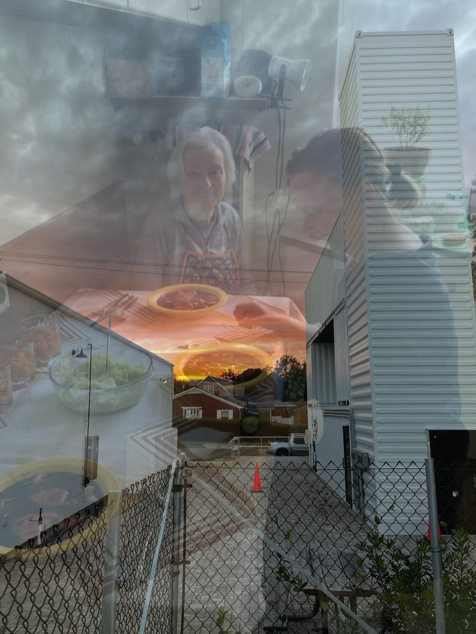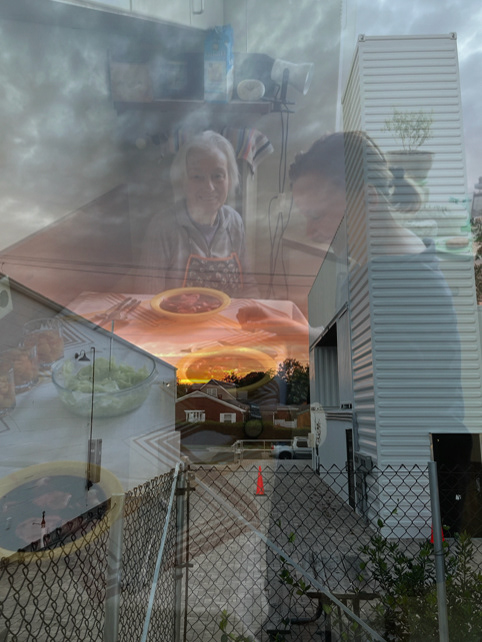As an educator, I employ a pedagogy of care that foregrounds the interwoven values of community, generosity, and gratitude.
These concepts inform learning objectives, teaching methods, course content, and serve as a guiding light as I navigate the needs of each classroom. My courses emphasize critical discourse, writing-as-thinking, reflection, and connection. In so doing, I am equipping my students not only for success in art history classes, but for their future academic and professional endeavors.
Through my curricula, I train them to be curious, resilient, thoughtful, and engaged members of their communities, who feel empowered and inspired by their cultural heritage. I foster applied learning opportunities by collaborating with local partners both on and off campus and I work to employ place-based pedagogies through which students use their local environment as an expanded classroom.
I am committed to mentoring and supporting students who are interested in pursuing graduate studies or careers in the cultural sector. By demystifying the often-opaque world of museums, galleries, cultural institutions, and graduate school I contribute to a much-needed democratization of the field that serves to promote equity, grow knowledge, and insist that art is for everyone.
Current UNCW Courses
ARH204 - Art of the Modern World
The long 20th century, spanning from the latter half of the 1800s through the 1990s, was a time of tremendous modernization and change. The era saw vast social, political, and economic transformations worldwide including two World Wars; the rise and fall of nation-states, democracies, and dictatorships; the growth of independence movements in former colonial states; the mid-century phenomenon of the Cold War; and the new world order of globalization. Like all cultural producers, artists working during this time witnessed and responded to the substantial and unprecedented shifts happening around them. This course examines some of the major monuments, artists, and artistic developments of the modern period, with an aim of fostering an understanding of the relationships between artworks and the historical, political, religious, and philosophical context of the societies that produced and used them. Students will develop the fundamental skills of visual analysis and become familiar with the critical concepts and vocabulary necessary for discussing works of art orally and in writing. By studying a range of movements, trends, and practices, students will gain knowledge of key players, institutions, styles, and artistic concerns in both the work itself and criticism surrounding it. The course’s central themes include the rise of Modernism in art; the transition from modernism to postmodernism; the role of art in society; art’s emancipatory potential; overlooked and under-represented voices; and the continued (?) relevance of 20th century art. Throughout the course we will work together to address the exclusionary aspects of this material, as we undertake the task of decolonizing and challenging the canon in an effort to construct a more equitable and inclusive art history.
ARH309 - Art of the United States
What is American Art and what is the art of the United States? What distinguishes it from other categories of art production? What geographic delineations apply to American Art and why? What time periods do we most commonly associate with American Art? What conventions do we expect to see and what practices are commonly eclipsed? How should we think of American art? As engaged, curious, and responsible inhabitants/residents of the United States, why should we study its art? This course will examine the art and architecture of the United States from the period of conquest through the mid-20th century. With a strong focus on the plurality and complexity of “American” voices, we will consider the ways in which visual culture reflects the historical, political, and social realities of this period. In doing so, we will together seek to articulate a social history of art that understands the production of visual culture as part of a broader set of social relations that extend across and beyond national borders. Not intended as an exhaustive survey, this course is designed to explore a series of interrelated themes that chronologically trace American art practices, concerns, and institutions. Topics covered will include: Native American arts (before and after conquest); architecture and the built environment; folk art and craft; fine art and the influence of European traditions; African American art; the growth of Modernism and avant-garde practices, and others.
ARH311 - Contemporary Art
This course examines the key figures, projects, themes, and concerns of art on a global scale since 1980. Beginning with the 1980s, we will trace the trajectory of art practices as they engage with the past, grapple with the present, and look toward the future. We will consider how today’s art has become increasingly heterogenous, contradictory, and dispersed. In an effort to better understand the changing terrain and complexity of the art world, this course will address the sites of production and reception of art, as well as the work of curators, critics, and institutions in shaping contemporary art. Throughout the semester, the artworks we study will be examined in relation to the sociopolitical contexts from which they emerge (and with which they engage). Students will practice writing and speaking about art through a series of assignments aimed at sharpening their ability to examine and articulate complicated ideas. They will also be expected to apply their growing knowledge of contemporary art by engaging with and interpreting exhibitions outside of the classroom. A Final Project will ask students to reflect on what they've learned and to examine and share with the class the art in which they find inspiration.
ARH314 - Art of the Cold War, 1945-1989
ARH314 provides students with an examination of the major artistic developments of the mid-to-late twentieth century during the Cold War period. This class is designed to explore significant currents of art production, key players, movements, and institutions on a global scale, reflecting the worldwide implications of Cold War tensions. Like all cultural producers, artists working in these years witnessed and responded to these substantial and unprecedented shifts. From the wreckage of the immediate postwar period, to the revolutionary and emancipatory upheavals of the 1960s and 1970s, to the arrival of postmodern discourse in the 1980s, the mid-twentieth century was a time of questioning authority and challenging the status quo. In art, this meant expanding and overturning traditional models of art-making and viewing. The course’s central themes include the transition from modernism to postmodernism; the role of art in society; art’s emancipatory potential; overlooked and under-represented voices; and the relevance of this material in 2024.
ARH403 - Don't Forget: Art, Memory, and Public Space
What is the relationship between the past, memory, and contemporary art? How do artists address issues of loss and longing in their work? What are the distinctions and overlaps between memory and history? How does the context of public space alter, enhance, and problematize commemorative artworks? How do historical monuments function in contemporary contexts and what are the politics of art, power, and visibility in public spaces? This 400-level seminar will challenge students to consider the varied points of contact between memory, history, oblivion, public space, and art practice.Through a series of case studies, site visits, and texts we will examine the controversies, challenges, and impacts of commemorative projects both in the U.S. and abroad. A semester-long Research Project will provide students with the opportunity to delve deeper into a related topic of their choice. Through a series of workshops (both in and outside of class) they will develop their topic; build a research plan and bibliography; craft a thesis; map-out a series of arguments; and present their findings. These scaffolded activities will form the outline of a finished paper, but students will not be asked to complete a final written essay. Rather, we will be focussing our attention on the processes of research, inquiry, synthesis, and critical thinking.
ARH476 - Art History Capstone Seminar (Co-developed with UNCW Colleagues)
The purpose of this course is to provide ARH majors with a culminating Art History experience that highlights their academic progress in developing research models and the presentation of written and oral argumentation. The course is structured to provide a robust curriculum that allows students to demonstrate their ability to understand and employ a wide variety of intellectual themes and methodological approaches found in the study of the history of art. The course is equally concerned with ensuring that students are prepared for their professional lives outside of the university. To that end, the course will feature multiple opportunities for professional development and career exploration.
Courses in Development
ARH313 - Modern Architecture and Urbanism
Introduction to Museology: Museums, Galleries, and Heritage Sites
Courses Previously Taught
Art for the People! - Memory, Democracy, and Community in Public Art Today (Boston University & Northeastern University)
Art in Public Spaces: Controversies, Lessons, and Community (Boston University)
Don't Forget! - Memory and Oblivion in the Contemporary City (University of Pennsylvania)
Art and Museums Today (Suffolk University)
History of Architecture (Boston University & Boston Architectural College)



